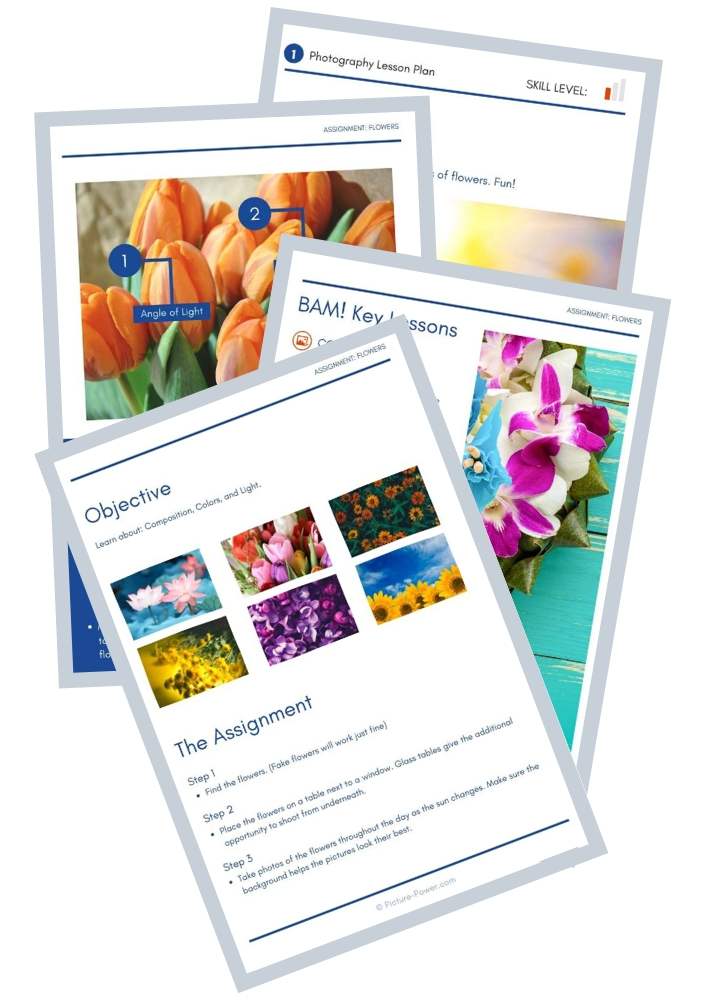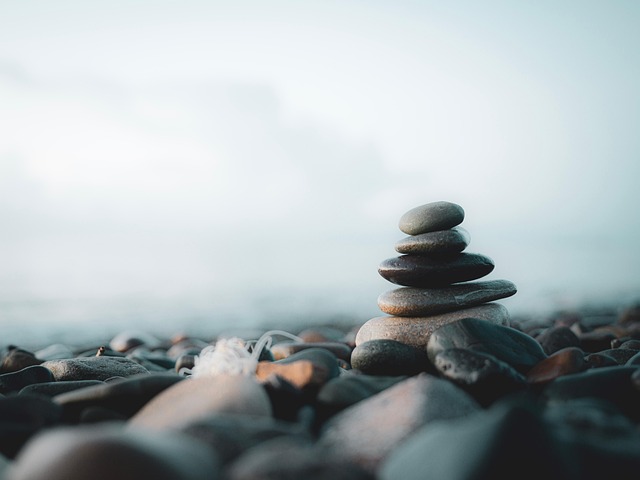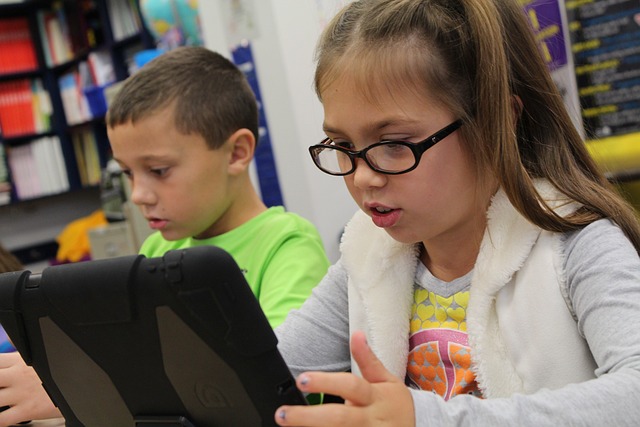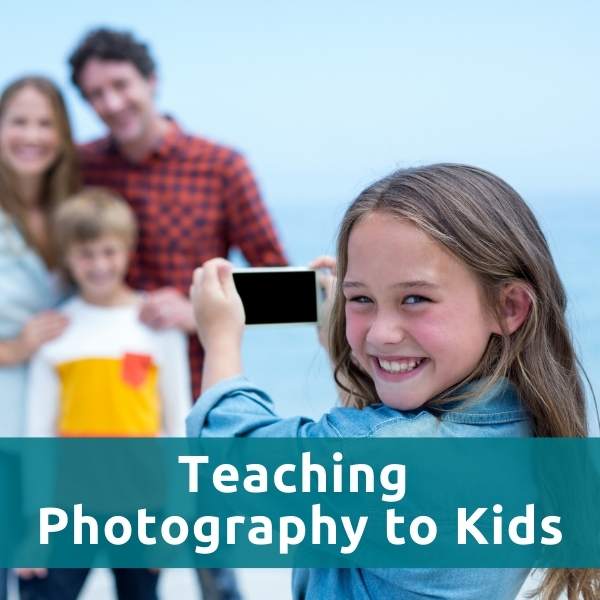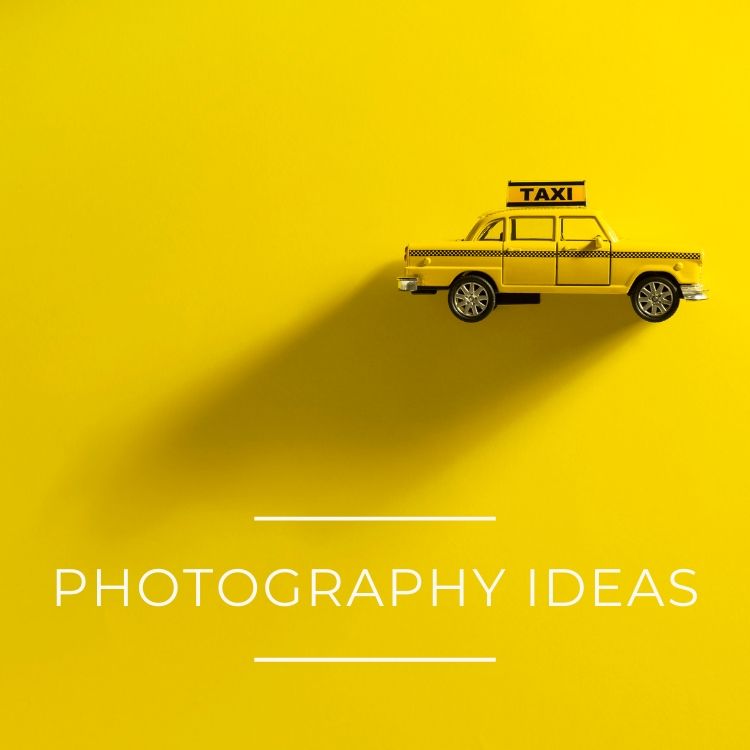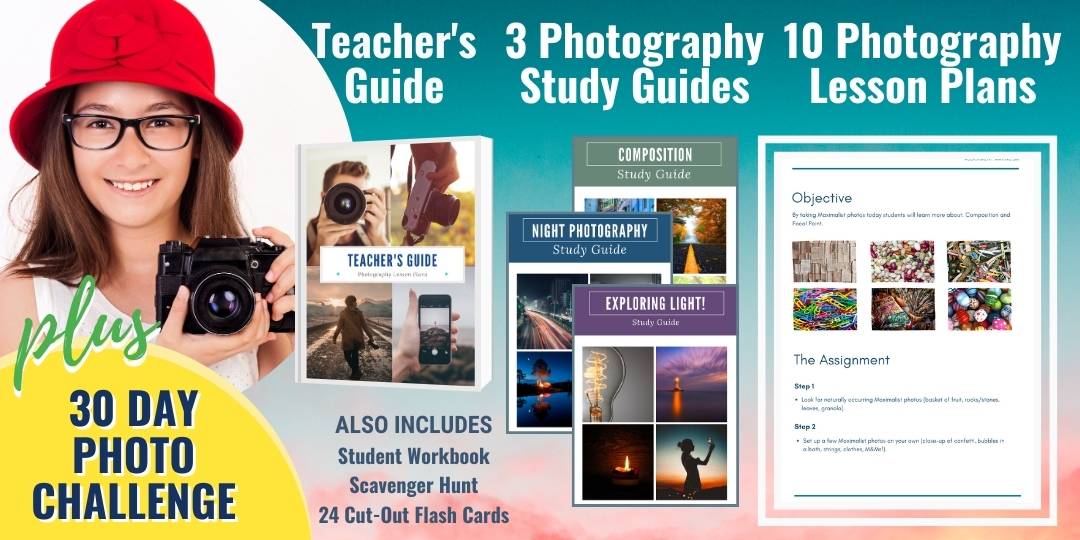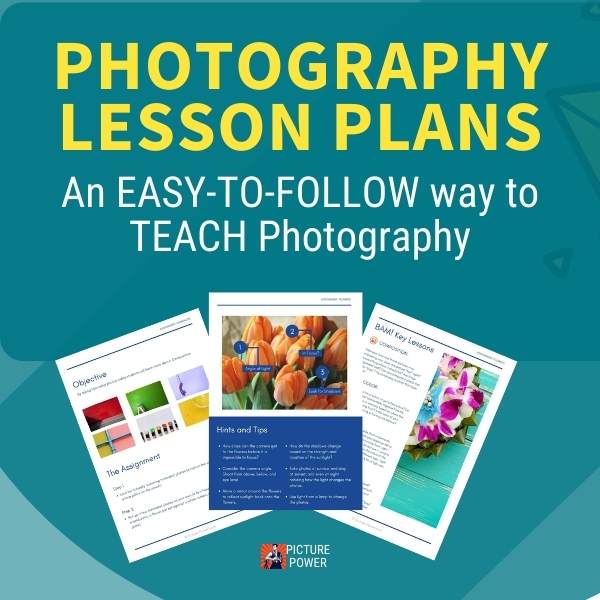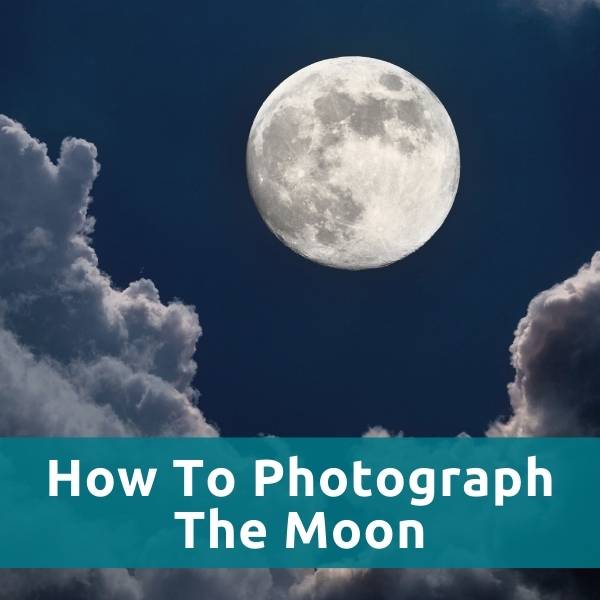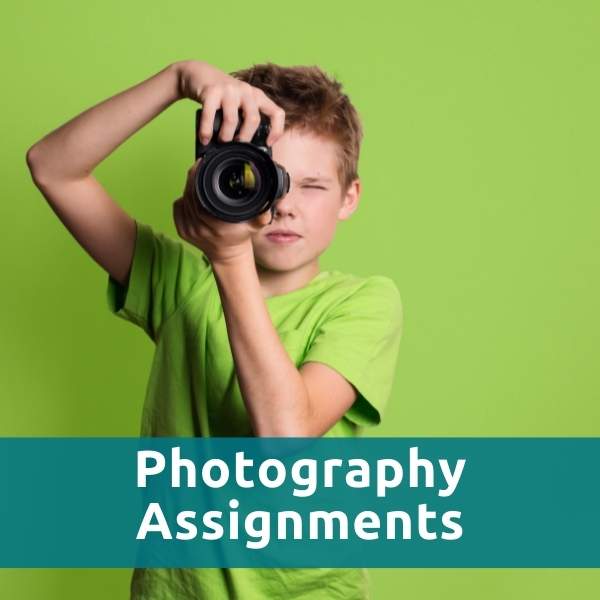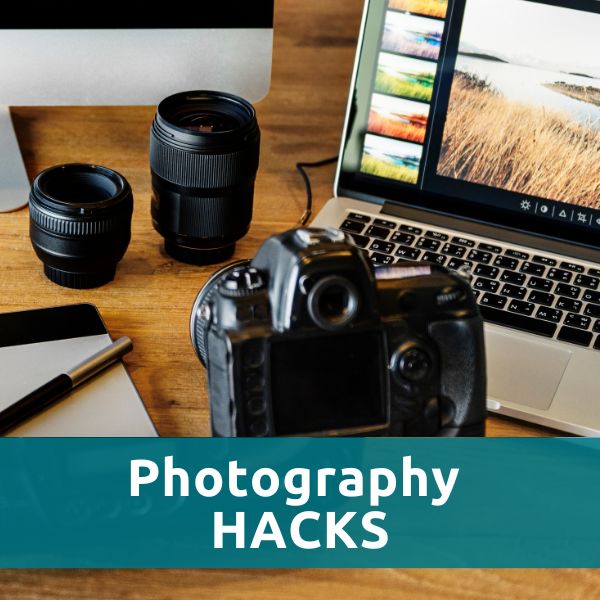The Fast Track teacher's Guide to Photography Basics
So, you’ve been asked to teach photography. Maybe it’s a one-off lesson, maybe it’s a semester-long elective, or maybe it’s just a small piece of another class you already teach. Either way, if you’re not a photographer, the thought of standing in front of a room full of students talking about aperture and ISO might feel like more than you signed up for.
Here’s the good news: you don’t need to be an expert to guide your students into making better pictures. Photography boils down to three things that anyone can understand — light, composition, and focus. If you can get these across, your students will learn the foundations they need, and you’ll feel confident leading the way.
This is your fast-track guide. Think of it as a crash course you can skim at lunch and use in class the same day.
Photography lesson plans pack (Printables)
Jump right into teaching photography with our exclusive Photography Lesson Plans pack.
Includes:
- 10 Photography Lesson Plans
- 1 Teacher's Guide
- 3 Photography Study Guides
- 30-Day Photography Challenge
- 1 Student Workbook
- 24 Cut-Out Photo Flash Cards
- 1 Photo Scavenger Hunt
5 Photography Lessons for Kids Using Smartphones

photography lessons for teachers: Light
If you remember nothing else, remember this: photography is painting with light. Cameras don’t capture objects, they capture light bouncing off objects.How to Teach It Quickly:
- Ask your students to take two photos of the same subject — one in bright sunlight, one in the shade. Compare them side by side.
- Do the same indoors: near a window vs. in a darker corner of the room.
- Challenge: Have students find the most flattering light for a portrait of a classmate.
The point here isn’t to talk about camera settings — it’s to make students see how light changes everything. Once they notice light, they’re halfway to becoming better photographers.

photography lessons for teachers: Composition
Composition is just arranging the puzzle pieces of a photo. Students don’t need to memorize a long list of rules — start with the two most powerful ones:
-
Rule of Thirds
Imagine a tic-tac-toe grid across the photo. Place your subject along those lines or at one of the intersections. This makes photos instantly more dynamic than centering everything. -
Fill the Frame
Challenge students to get closer to their subject so it takes up most of the photo. This eliminates clutter and makes stronger images.
Quick Classroom Activity:
- Have students take one photo of a classmate standing in the middle of the frame, then another using the rule of thirds.
- Next, ask them to take a “too far away” shot and then a “fill the frame” shot.
- Put them side by side and discuss which ones feel more engaging and why.
You don’t have to lecture much — the comparisons teach the lesson for you.

photography lessons for teachers:
Focus
Students may already know that some photos turn out sharp and others blurry, but they might not know why. You don’t need to dive deep into shutter speed or lens quality — just get across this idea: where you place focus directs attention.Simple Teaching Method:
- Ask students to take a picture of an object on their desk. Then, without moving, shift the focus to the background instead.
- Compare: Which photo makes the subject stand out more?
If your students are using smartphones, tapping the screen to set focus is often all they need to know. If they’re using cameras, show them how to half-press the shutter button to lock focus.

Photography lessons for teachers:
Combining all three
Once you’ve introduced light, composition, and focus, give students a mini-challenge that uses all three:
Assignment: “Take three photos of the same subject, but make each photo look different. Change the light (move around or use a window), change the composition (rule of thirds or fill the frame), and change the focus (foreground vs. background).”
This simple exercise helps them apply the basics without you needing to know anything more technical.
To change perspective using a smartphone, try getting closer to your subject or moving higher or lower relative to them (for example, shoot from ground level up towards a building).

photography lessons for teachers:
let students teach themselves
Here’s the secret every teacher loves: photography often teaches itself. Once students start experimenting, they’ll discover things on their own — and probably show you tricks you didn’t know. Your job isn’t to be the expert, it’s to guide the exploration.
Encourage them to:
- Compare their photos in small groups.
- Share the one they’re most proud of and explain why.
- Look at professional photos (magazines, websites) and identify how light, composition, and focus are used.
The more they look, the more they’ll learn.
Teaching photography doesn’t have to be overwhelming. If you keep it simple — light, composition, focus — you’ll give your students the foundation they need while keeping your own workload manageable.
You don’t need to know every camera setting, you don’t need expensive gear, and you don’t need to fake being a pro. All you need is to give students permission to explore, experiment, and see the world a little differently through their lens.
And who knows? Along the way, you might find yourself enjoying photography, too.
Next Step for You: If you want a set of ready-to-go lessons, projects, and worksheets you can drop straight into your class, check out Picture Power’s Photography Lesson Plans. They’re designed exactly for teachers in your shoes — simple, flexible, and effective.
Photography lesson plans Pack
Want more photography lesson plans for kids? You're in luck!
Check out our mega pack of lesson plan pack with assignments, teachers guide, flash cards and much more!
Learn more about our exclusive Photography Lesson Plans Pack for Teachers and Kids by clicking the button below...

